

With much of the world in the firm grasp of winter, today we take a minute to shine a light on three of the most common indoor air pollutants—and how you can avoid them.

Ozone
Ozone is one of the main components of outdoor air pollution, but it can also sneak its way into homes and offices (where people spend the majority of their time, especially in winter).
Sources of indoor ozone pollution include copy machines, laser printers, UV lights and (ironically) electrostatic air purification systems. According to the EPA, ozone is “good up high, but bad nearby.” In other words, stratospheric ozone is protective, since it helps filter the sun’s damaging UV radiation. But ozone in the atmosphere—the air we breathe—can be harmful to the respiratory system, causing or aggravating asthma, throat irritation, coughing, chest pain and more.
There’s good news, though. The American Society of Horticultural Science says that three common houseplants—snake plant, spider plant and golden pothos—are all effective in reducing ozone. And they add a nice touch of “natural” to your surroundings, too. But there’s more. In addition to removing ozone:
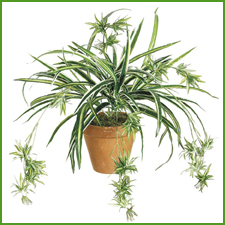
Spider plant
Spider plant is also known to help reduce carbon monoxide, as well as volatile organic compounds like benzene, formaldehyde and xylene, a solvent used in the leather, rubber and printing industries.
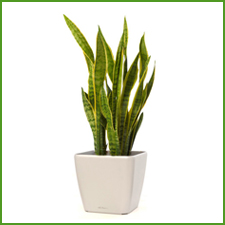
Snake plant
Snake plant (aka mother-in-law’s tongue) also helps filter out formaldehyde, an ingredient in in some cleaning products as well as tissues, toilet paper and personal care products.
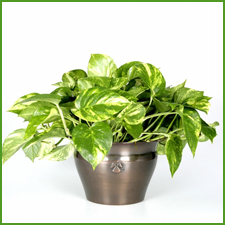
Golden pothos
Golden pothos is another powerful plant for fighting formaldehyde, and since it’s fast-growing it can green up your home in a flash!
Carbon Monoxide
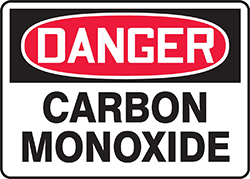
This odorless, invisible gas prevents your body from properly using oxygen. It can cause headaches, nausea, dizziness, confusion and a rapid heart rate. If it’s concentrated enough, it can even be lethal.
To reduce your risk of carbon monoxide poisoning, make sure your heating system has been installed correctly and have it checked annually. Avoid heating your home with a gas stove, and consider buying a CO detector. Just remember, carbon monoxide is lighter than air so it rises. Make sure your detector is placed up high on the wall or even on the ceiling.
Formaldehyde and Other VOCs
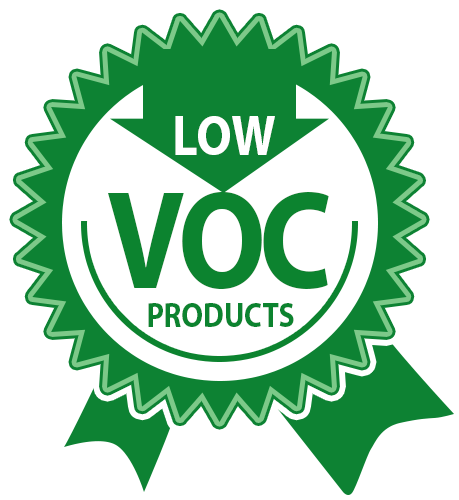
Volatile organic compounds (VOCs) are compounds released when fuels like gasoline, diesel, coal, natural gas or wood are burned. VOCs are also released from paints, glues, solvents and other products used and/or stored indoors. Examples of VOCs include such compounds as benzene, diesel exhaust particulates, formaldehyde, perchloroethylene, styrene and xylene, among others.
The known health effects of VOCs on humans vary from highly toxic to none at all. Benzene and formaldehyde are listed as human carcinogens by the National Toxicology Program. Others, such as diesel exhaust particulates, perchloroethylene and styrene are listed as “reasonably anticipated to be human carcinogens.” Inhaling VOCs can cause nausea and breathing difficulty, and they can also irritate the eyes, nose and throat and cause damage to the central nervous system and other organs.
To protect yourself and your family from VOCs, look for “low VOC” on paint and building supply product labels. Keep all indoor areas well ventilated, and allow new carpet and/or building products to off-gas outside first before installing them.
And, in addition to the plants mentioned above, the following are also helpful for purifying the air in your home: Aloe vera helps filter out formaldehyde and benzene. And bromeliad, Caribbean tree cactus, dracaena and jade plant are also known to remove VOCs from indoor air, as shown in this video highlighting research by the State University of New York.
Resources:
I love this! My mom has always had tons of houseplants, and she gave me a spider plant when we bought our first home. Mine has had lots of babies, so I have 3 different spider plants in our house now and I’ve been able to give some starts away. I knew plants were air purifiers, but it’s great to know HOW they do their job!
Plants are such a lovely gift—and even more awesome since they help purify the air! Thanks for sharing, Tanya!
The Spider plant is also pet-friendly, but the other two are not…something for pet owners to be aware of!
My outdoor plants come inside as much as possible in the winter. I have all the plants mentioned and some others that we enjoy indoors during this cold season.
I use essential oils in diffuser and a salt lamp
Plants in my home! Yes Always
It’s so wonderful to know that my houseplants serve a bigger purpose than just making me happy.
Any excuse to get more houseplants is welcome in my world 😉
I wish I could keep plants alive!!
I absolutely love this, I have a Golden Pothos, a Spider Plant and a Dracenea all at my desk! I have two big Snake Plants, and a Spider as well as Pothos at home too! I am glad that I am on the right track for keeping my family a little safer!
I love this, except I got rid of all my house plants because of my cats. I wonder if there are any other options besides plants?
I used to keep my house FILLED with houseplants, but I slowly phased out of that once I had kids. I know they purify the air, but I have been growing lazy (and busy!) of late.. but this is making me rethink my lack of houseplants!
I use an air purifier year round. In February we usually have a warmish day. I will open the house up for 5 to 10 minutes just to change the air in the house.
I want to try houseplants but because I’ve also got mold allergies/mold sickness, I need to be super careful b/c I understand potted plants can harbor mold growth (and I’ve got a brown thumb to begin with so not sure how to go about it).
I have split my mother-in-law’s tongue 4 times and I have 2 large pots in my home.